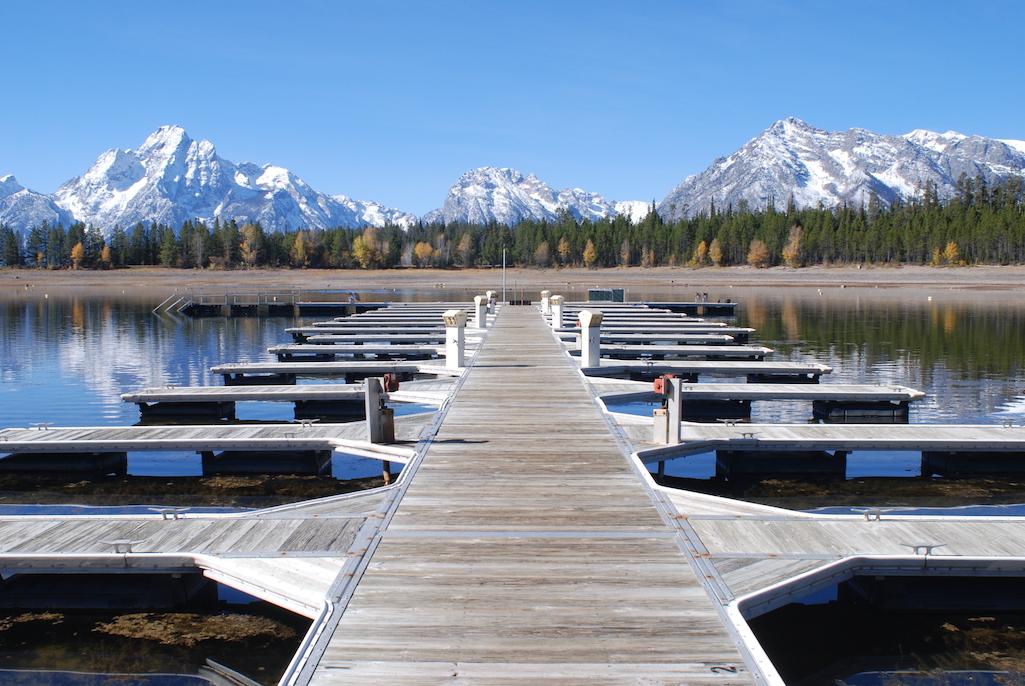
Colter Bay Marina will not be able to handle powerboats once Jackson Lake is drawn down/Kurt Repanshek file
Water woes are reaching up to Grand Teton National Park in Wyoming, where Jackson Lake is going to be drawn down to send water to reservoirs downstream on the Snake River.
Park visitors, boaters, and river users were cautioned Tuesday to expect impacts to some recreational activities, including modified operations at lake marinas, from the lake's expected drawdown.
Due to very low natural flows and the need to supplement downstream reservoirs, Jackson Lake is expected to be drawn down rapidly to levels only seen three times in the last 30 years, according to park staff.
Park concessions with marina facilities, including Grand Teton Lodge Company and Signal Mountain Lodge Company, are modifying operations in accordance with forecasted lake level changes. The Colter Bay boat ramp is expected to close to motorized vessels by Wednesday, July 21. The ramp will still be accessible to vessels that can be hand carried.
In addition, it is likely that impacts to Signal Mountain and Leek’s marinas will occur as early as the end of August or early September. Park visitors with motorized boats should note that recreation opportunities will be increasingly limited in the park.

Lower levels of Jackson Lake will challenge boaters/NPS
Recreation on the Snake River is also being affected. All river users are advised to be aware of higher than normal releases from the Jackson Lake Dam that will likely extend into September, before being reduced rapidly over the course of a few days to minimum winter flows. This will result in swifter currents than typical through August, and the possibility for new river hazards as flows decline.
As early as September, the river will become increasingly difficult for larger watercraft to navigate. As a result, scenic float trip operations will have shorter than historically typical operating seasons. Guided fishing operations may be affected as well.
Background
Due to drought conditions throughout the West, water supply in the form of reservoir storage is in critical need. The Jackson Lake Dam, located on the Snake River in Grand Teton, contractually provides irrigation and flood risk management for the Upper Snake Basin. The Jackson Lake Dam raises the water level of the natural lake by 39 feet.
According to the Bureau of Reclamation, the reservoir currently is 71 percent full and 80 percent of normal storage for the date. The dam is currently releasing 5,250 cubic feet per second, which has been drawing down the reservoir at a rate of 3.5 to 4.5 inches per day. Current projections indicate the reservoir will continue to do so at a rate of 4.5-6.0 inches per day through the middle of September, when the rate will likely be reduced to winter flows.



Add comment